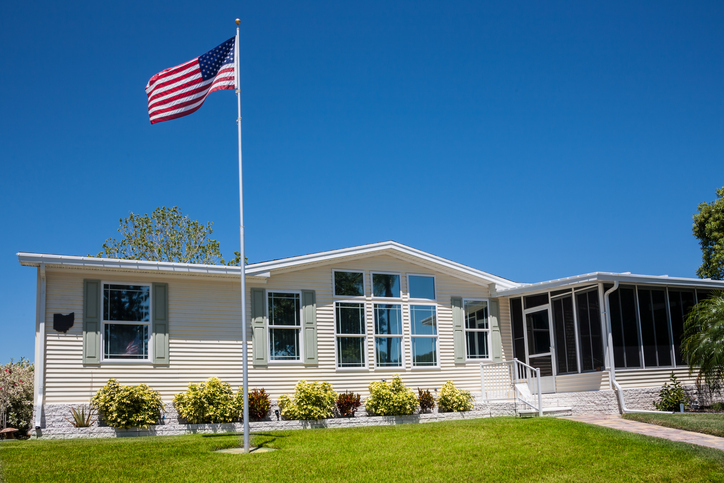What is a manufactured home exactly, and how have they evolved over time? A manufactured home is built entirely in a factory setting. Not only is it built under a federal building code administered by the U.S. Department of Housing and Urban Development (HUD), but it’s also built to meet state and local codes where the home will be placed. Because it’s built in a factory, which automates much of the process, manufactured homes can be built to high standards of quality and safety in less time than a site-built home. However, the manufactured housing process was not always like this.
World War II
Early mobile homes were used as temporary housing for workers contributing to the war effort. The classic rounded bread loaf shape was a popular design. After the war, these homes could be repurposed for soldiers coming home to their families. Mobile homes from this time period were more accurately called trailers; many of them were pulled by cars and parked in private trailer parks owned by the government. A typical trailer was about 20 feet long and 8 feet wide, with no bathroom.
1950s to 1960s
After the war, demand grew for affordable mobile housing options. The design became boxier, and the standard width expanded from 8 feet to 10 feet. These mobile homes were usually constructed with aluminum panels and set up on permanent foundations. Mobile home parks popped up in several towns, offering residents the use of separate bathroom and laundry facilities.
1970s to 1980s
This was an important time for manufactured housing. In 1976, the U.S. Congress passed the National Manufactured Housing Construction and Safety Act (42 U.S.C.). This act held the industry to a higher standard, ensuring that manufactured homes were safer, more durable, and made of higher-quality materials. The manufactured home industry also took the opportunity to rebrand itself as “manufactured housing” rather than “mobile home.”
1990s to Present
New codes and standards have been implemented over the years to further improve safety and construction. For example, the federal Manufactured Home Construction and Safety Standards, commonly called the HUD Code, ensures that every manufactured home will stand up to the strength of the wind in that area. Most of the United States is designated as Wind Zone I, which can experience wind speeds of up to 70 miles per hour (mph). The northeastern U.S. is Wind Zone II, which has maximum 100 mph wind speeds. Finally, Wind Zone III includes the southeastern part of the U.S. and some of the Gulf, which can experience 110 mph wind speeds. This is particularly important for manufactured homes in Florida and other states susceptible to hurricanes.
Manufactured Housing Today
The manufactured housing industry has come a long way since it began. Inexpensive and lower quality materials have been replaced with safer, more durable materials and strictly enforced standards. Modern manufactured housing is affordable and customizable, making them wonderful options for those looking to retire. If you’re considering investing in a manufactured home in Florida, browse our floor plans and request more information by contacting Jacobsen Homes today.

